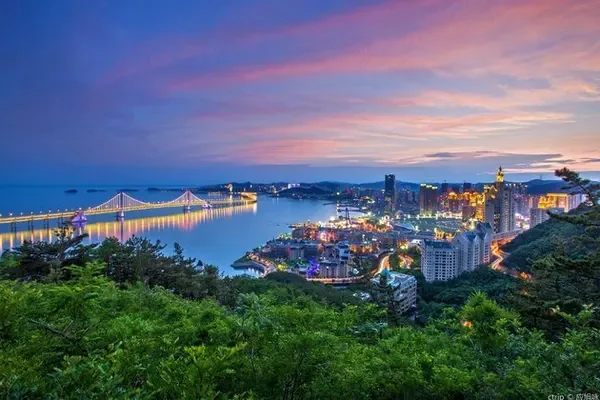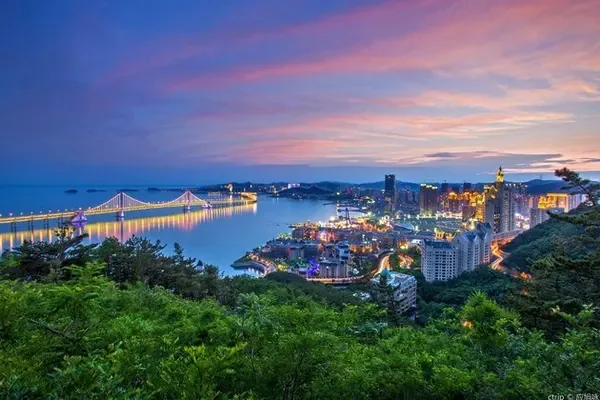The bus from Ruicheng to Yongji is completely bus-like.
The road seems to avoid Zhongtiao Mountain. One side of the vehicle is the Yellow River, and the other side is Zhongtiao Mountain.
To go to an ancient town, Fenglingdu, to change cars. The ferry is located at a corner of the inverted L shape in the middle reaches of the Yellow River. Since then, the river has flowed out of the Shanxi-Shaanxi Gorge and entered the flat plains of the Central Plains. Like a wild horse, it suffered from severe floods in its early years.
This is still the boundary of Ruicheng, Shaanxi. It strangles the main traffic road of Shanxi, Shaanxi and Henan, and faces Tongguan in Shaanxi across the river. It has been a traffic throat and an important place for military strategists throughout the ages. It was also an important battlefield during the Anti-Japanese War.
After getting out of the car, I asked people for directions. "Fenglingdu? Isn't it my place?" The fellow kept saying that the town under his feet was that. After talking for a long time, he finally found out that it was the Yellow River Bridge, but he said firmly: "What do you think, it's either a beach or a bridge, and Mugu must have crossed."
I wanted to take a taxi to see Gudu and the ancient city of Tongguan on the other side of Shanxi. Seeing that the rain was getting heavier and heavier, I was afraid that the muddy roads in the wild would be slippery, and the fellow said it with certainty, so let this Tongguan and Gudu be in my head Leave room for imagination.
Yes, yes, "the first time we met at Fengling Ferry, the first time I saw Yang Guo, I missed my life." This is where the poignant and tender story takes place.



Thirty years in Hedong, thirty-four in Hexi. It refers to the frequent diversion of the Yellow River here. Changes have taken place in the east and west of the river, so that the famous ancient ferry towns in the past have been submerged in the water and buried in the soil. But some place names of Gudu still remain in the local area.



It was a holiday, and a few parents brought their children here and there, chanting in front of this old man: the sun is at the end of the mountain, the Yellow River flows into the sea, and they want to go a thousand miles and go to a higher level. People write poems because of Lou, and Lou speaks because of poems, which are passed down from generation to generation. So far, Chinese people have grown up since they were babies, and very few people don't know about Guanque Tower. Backed by Zhongtiao Mountain, facing the Wanwan River, the poet's eyes and direction, and a large green beach of the Yellow River, the scenery is really good. No wonder Wang Zhihuan's poems are so popular that he left famous lines through the ages. So far, among the four famous buildings in China, there is still Yueyang Tower that I have not been to.






At Pujindu, which is several kilometers away from the current Yellow River, four township iron cattle were unearthed more than 30 years ago. They were cast in the Kaiyuan period of the Tang Dynasty, each weighing 50 tons, and four figures in the image of Han, Mongolia, Tibetan, and Uighur. And iron pillars and iron mountains, which were used to fix the Yellow River pontoon bridge. It is said that the story of Huaibing fishing for iron cattle took place here.










Ming Dynasty stone dykes and fixed iron hooks

excavation scene



Under each iron ox, there are several iron pillars fixed
Simulate the ancient ferry scene

Pujiu Temple, where the story of The West Chamber takes place. Ewha Courtyard, West Wing, Climbing Wall, Back Garden, Yingying Pagoda...every courtyard, every hall, every corner here seems to be bordered by Zhang Sheng and Cui Yingying.













![Yuncheng Yongji Secret Realm [Snow Flower Mountain] can't be hidden! It takes 8 hours to climb to the top, surrounded by mountains and rivers all the way! The beauty is too pure!](https://www.anyonetrip.com/uploads/202302/03/cc199230fef4a35f.webp)